- Readers know that occasionally I rerun an older blog post because many current readers have never seen it. I originally published on this subject over four years ago (9/26/13) but for this version I’ve added four images, rewritten much of the text, added new information and cleaned up the formatting. For many of us winter is “raptor season” so I thought this would be an appropriate time for an update. For readers who have seen some of this before, a “review” just might be helpful.
I’ve said before that one of the skills that can be of immense value to the bird photographer (and of interest to birders of every persuasion) is the ability to predict when your subject is about to take off. Flight shots are often easiest to get immediately after take-off but even then they’re still a huge challenge. It’s much easier to keep the bird in the frame and in focus during flight if you can anticipate when it’s about to take off. Camera settings can also be changed at the last second so they are more appropriate for a bird in flight than when it’s perched.
If one of your goals is to photograph raptors in flight remember this if you remember nothing else from this post:
- Once you’ve locked focus on a perched bird it’s much easier to maintain focus as it’s taking off and in flight than it is to acquire focus after they’re already airborne.
Many raptors give hints when they’re about to launch. Here’s a few signs I’ve learned to watch for:
- defecation
- turning on the perch to face into the breeze
- a raptor at ease will often stand on one foot. When they put that foot down and suddenly look more alert takeoff may be imminent
- crouching down. This posture allows them to more effectively push-off with their legs
- rousing – when a bird lifts its feathers and then shakes them back into place
- stretching
Stretching is one of the easiest to miss, not because we don’t see it but because the behavior makes them look so relaxed that imminent take-off generally doesn’t come to mind. But a raptor that has been perched for a while often needs to stretch its wings in preparation for the strenuous and athletic act of take-off, just as a human athlete stretches before an event. In my experience a perched raptor that has recently flown is unlikely to stretch just before take-off because it doesn’t need to “limber up”.
Following are several examples where stretching immediately preceded lift-off to illustrate my point.
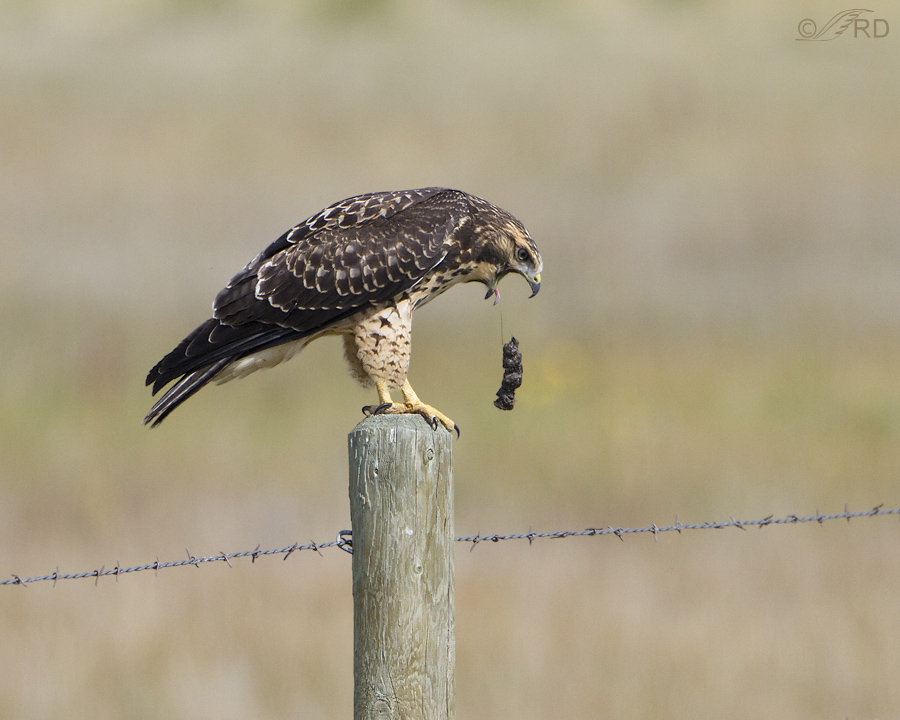
1/1600, f/7.1. ISO 500, not baited, set up or called in
I photographed this Swainson’s Hawk perched on a fence post for 16 minutes and during that time it regurgitated two pellets which may have been part of the reason that it was so “sticky” for so long. I believe it knew it was about to cast a pellet so it was reluctant to take off before it did so.
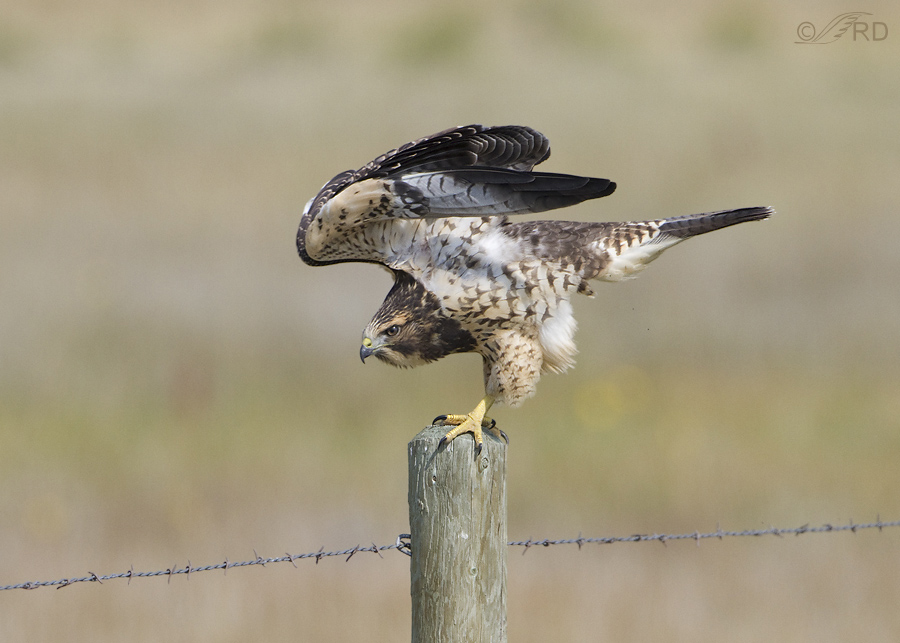
1/1600, f/7.1. ISO 500, not baited, set up or called in
Soon after it spewed the pellets it turned into the breeze on its perch and did a wing-stretch which indicated to me that take-off could be imminent (falconers call this kind of double wing stretch over the back a “warble”).
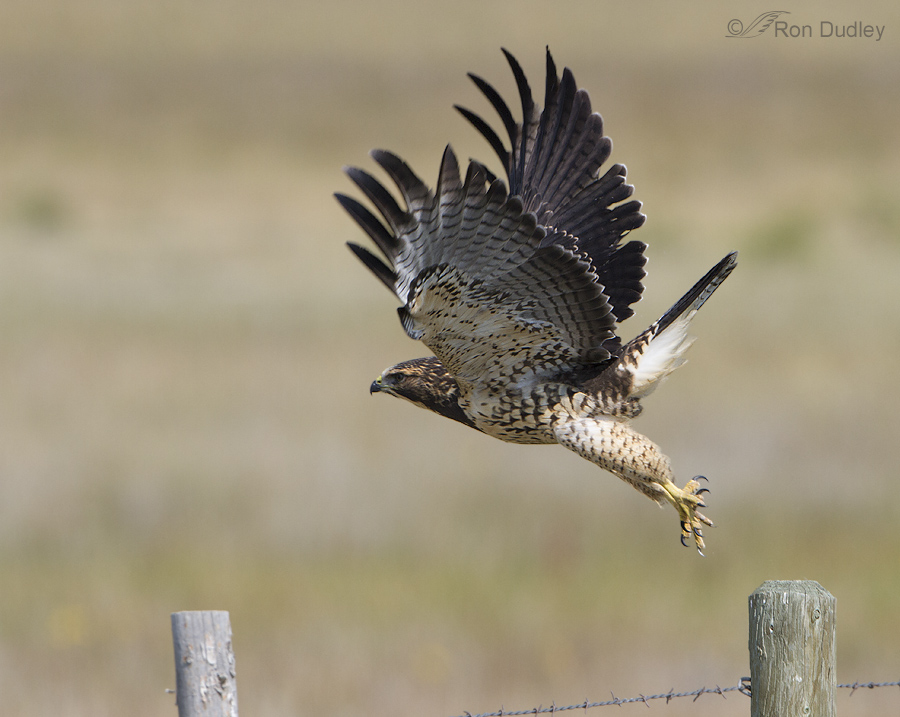
1/2000, f/7.1. ISO 500, not baited, set up or called in
Very soon after the stretch it took off but the bird turned slightly away from me and the head is partially shaded.
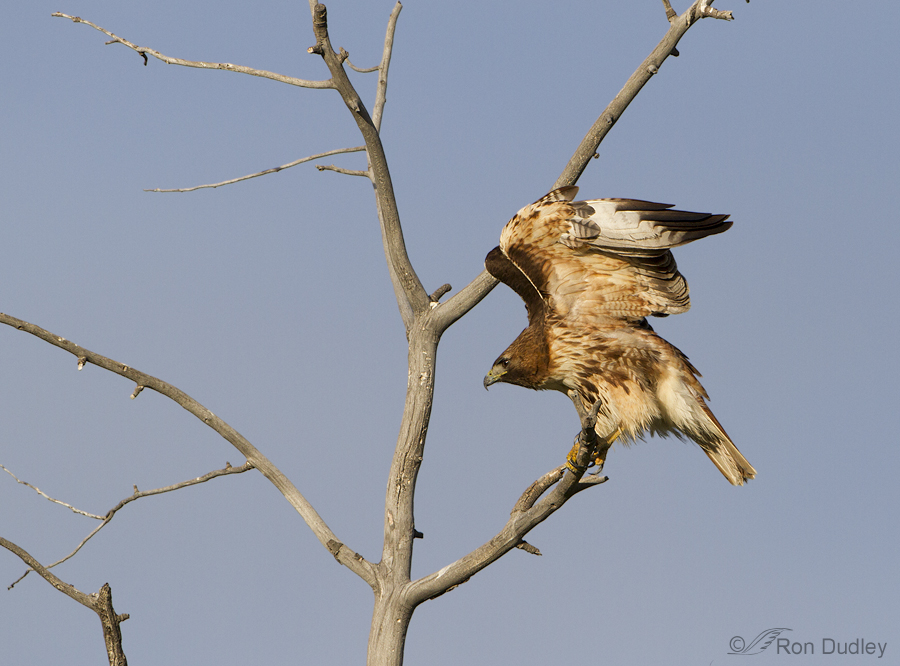
1/2500, f/5.6. ISO 640, not baited, set up or called in
I found this adult Red-tailed Hawk and its mate perched in their favorite tree and photographed them for seven minutes before this one stretched its wings and then…
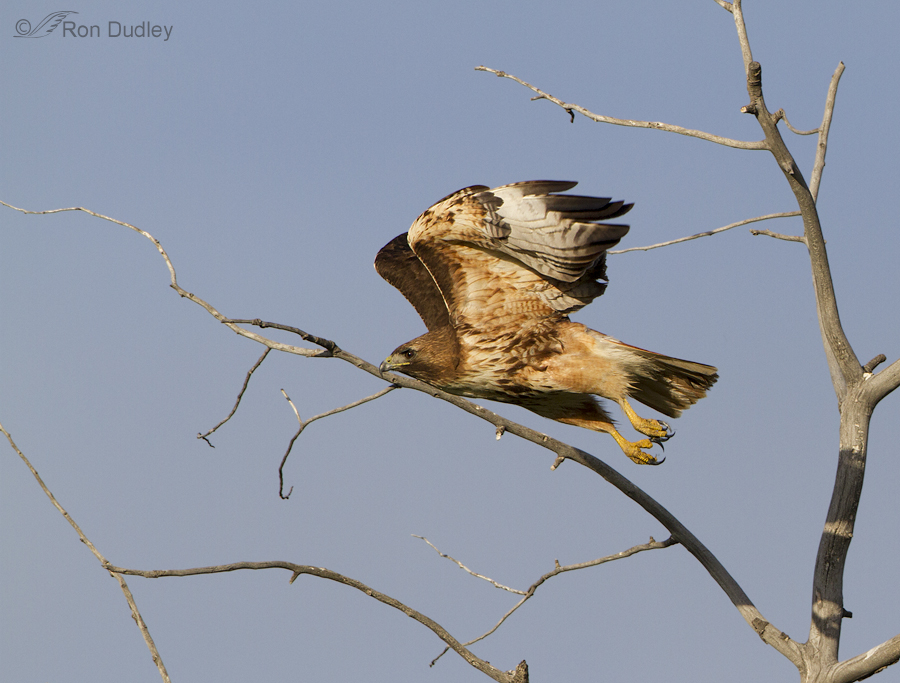
1/2500, f/5.6. ISO 640, not baited, set up or called in
abruptly took off.
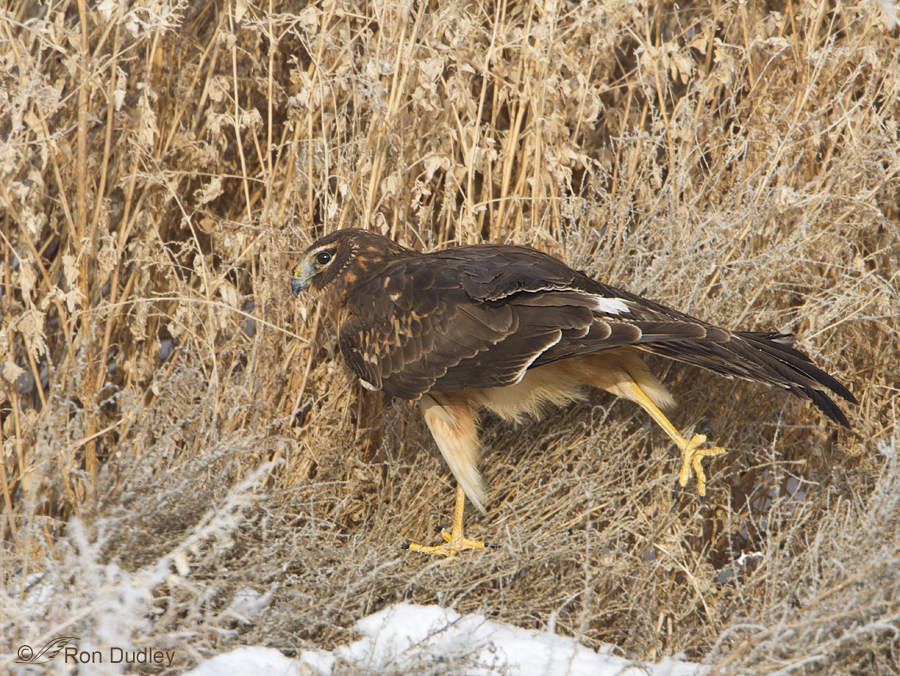
1/1250, f/7.1. ISO 640, 1.4 tc, not baited, set up or called in
I approached this Northern Harrier as it warmed in the sun on a cold winter morning. When it began to stretch its right wing and foot (falconers call this kind of single wing stretch while balancing on one leg and stretching the other a “mantle”) I suspected it was about to take off but I was faced with a dilemma. The hawk was perched on the ground at the base of a tall bank of vegetation that allows take-off only in my direction. The problem was that I had my tc (teleconverter) on which meant that I would likely be too close to avoid clipping or cutting off the extended wings as it got closer to me in flight.
I just knew that if I took the time to remove the tc I’d miss the take-off so I took a chance and left it on.
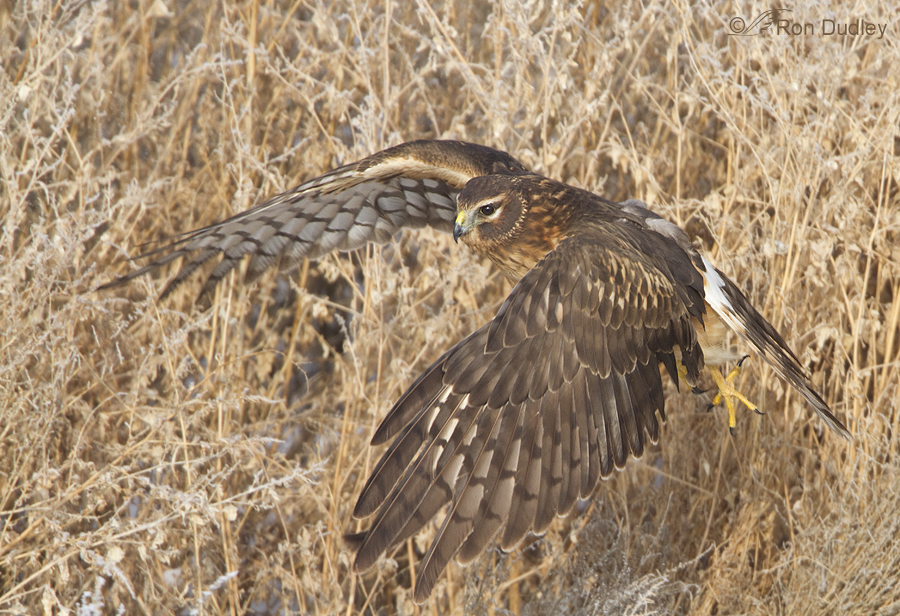
1/1250, f/7.1. ISO 640, 1.4 tc, not baited, set up or called in
I got lucky and didn’t clip anything but the bird is too tight in the frame for good composition and with that background I can’t realistically add canvas (which I prefer not to do anyway).
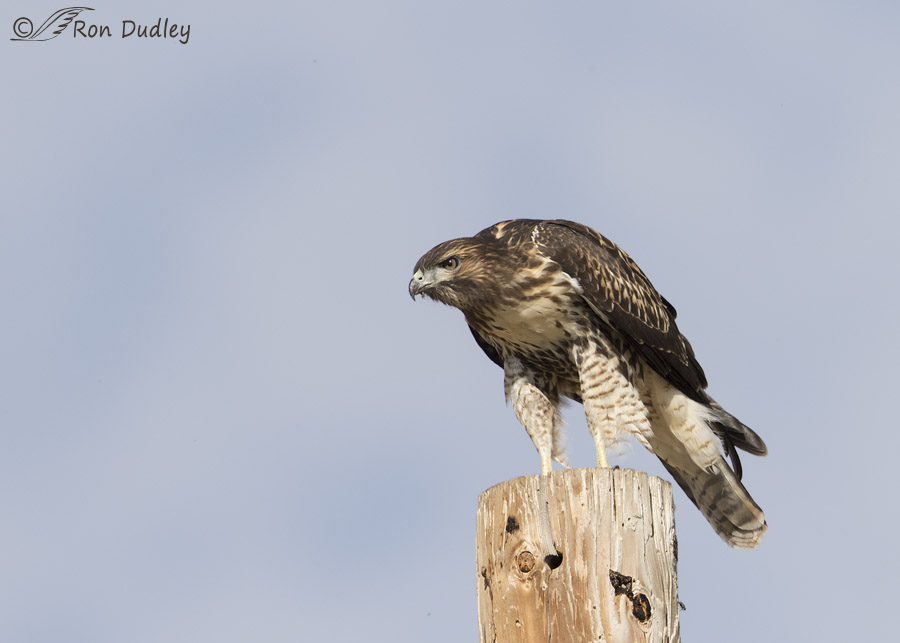
1/2500, f/7.1, ISO 400, not baited, set up or called in
Another behavior that often signals imminent takeoff is rousing. When I see a raptor rouse on its perch I always prepare for takeoff because it can occur immediately after. In fact rousing is so intertwined with takeoff that a few times the two behaviors have occurred simultaneously.
This juvenile Red-tailed Hawk didn’t stretch its wings before takeoff…
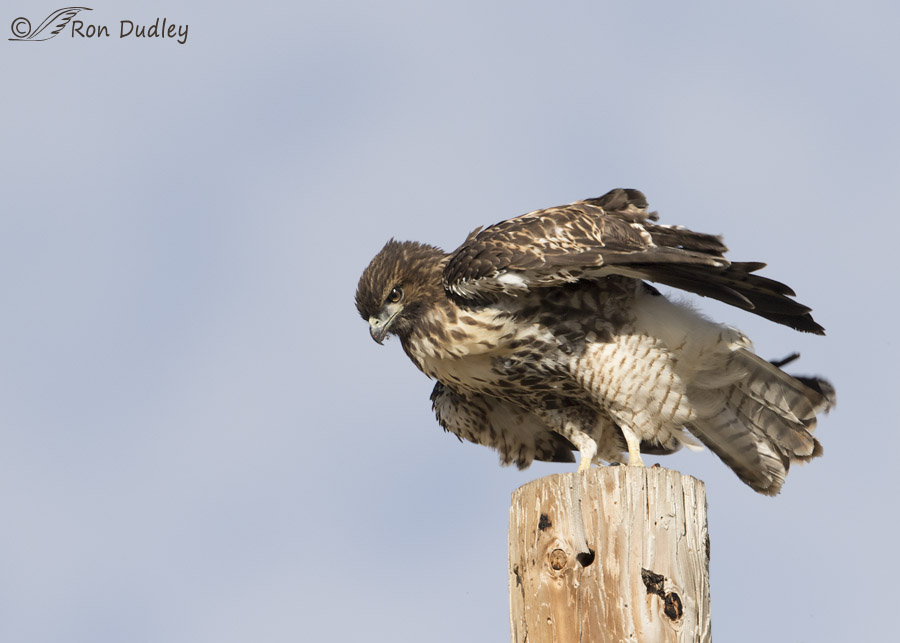
1/2500, f/7.1, ISO 400, not baited, set up or called in
but it did start to rouse and then actually took off…
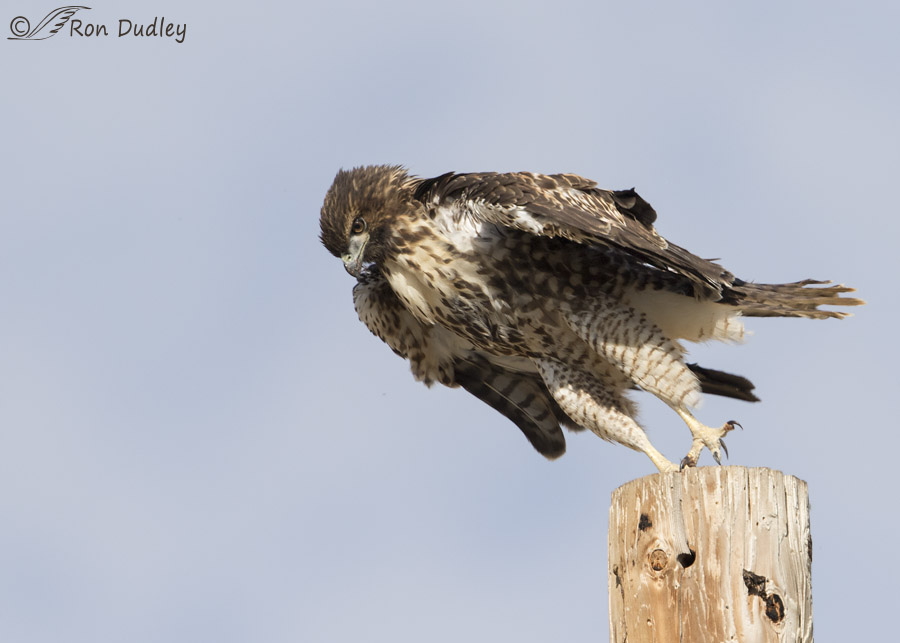
1/2500, f/7.1, ISO 400, not baited, set up or called in
while it was still rousing.
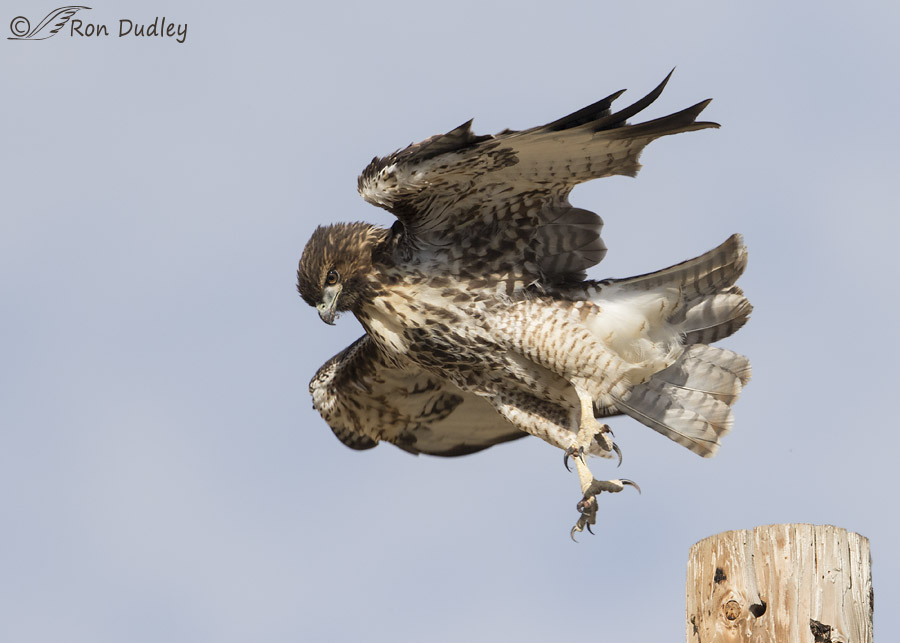
1/2500, f/7.1, ISO 400, not baited, set up or called in
And it continued to rouse in flight…
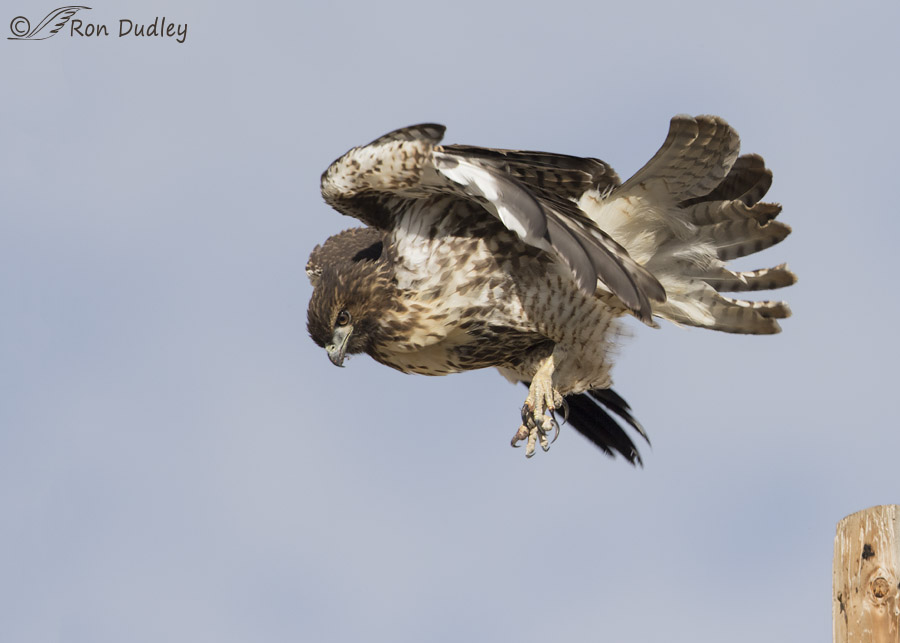
1/2500, f/7.1, ISO 400, not baited, set up or called in
for at least three frames.
Sometimes we don’t have much time, if any at all, between rousing and takeoff.
I don’t want to leave the impression that the behaviors mentioned at the beginning of this post always precede immediate take-off – they don’t. Each of them can occur when the bird has no intention to launch but there’s a very large correlation between those behaviors and imminent take-off so this knowledge can be very useful to bird photographers (or anyone else interested in bird behaviors).
Ron
PS: I’m curious about something.
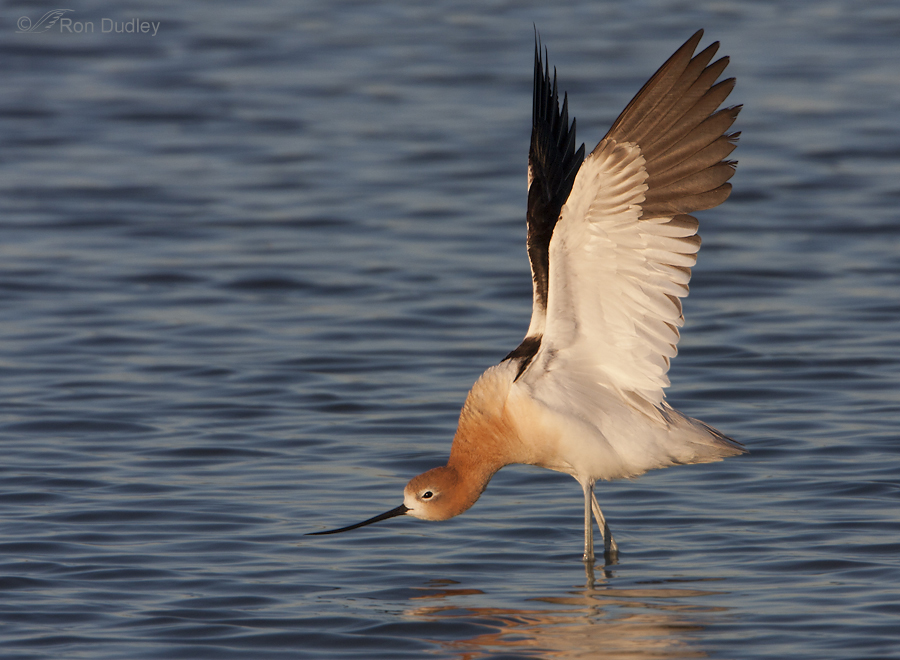
1/1000, f/8. ISO 500, not baited, set up or called in
I’ve noticed that when some non-raptors like this American Avocet stretch their wings vertically they very often fully extend them, with the “wrists” straightened. I’m fairly sure I’ve ever seen this in a raptor – if I have I don’t recall it. In my experience when a raptor performs a vertical wing stretch it leaves the wrists flexed so the wing is not fully extended vertically, as in the Red-tail and Swainson’s examples above (though when they stretch their wings horizontally or downward the wing is often fully extended).
I know that’s not because raptors are incapable of fully extended vertical wing positions due to some quirk in their wing anatomy because their wings are often in a fully extended vertical position during takeoff.
I wonder why there’s such a difference in stretching “styles”. Any thoughts?


Very informative, and absolutely beautiful photos!
Ron, thank you for this very informative and educational post. Unfortunately, I don’t get close enough to raptors to observe their behavior, so it is good that I can get the knowledge from you. You are still a great teacher, in my opinion.
The Juvenile red-tailed hawk rousing in flight is quite amazing and curious.
Hope that back is feeling better. Pain is indeed a curse.
The back is better, Alice – though some of the pain has just moved to a different location. At least I got some sleep last night!
Great post illustrated with great images.
Thanks, Tom.
Wonderful images…good tip…never heard the term “warble” used that way before…still learning somethimpng new and interesting every day…thanks!!!!
Good!
What wonderful shots and information Ron! I copied the info and saved it so that I can reread it as often as necessary. At my age, that may be very often!
Charlotte
Repetition is a good way to learn stuff, Charlotte – no matter our age. Thank you.
Awe and wonder.
I suspect that I saw any of the ‘signs’ I would be so intent on watching (and keeping my jaw off the ground) that remembering the camera would escape my crowded mind.
Love that experience and determination have given you the skills to recognise the early signs.
Yes, photographers have to remember to push that shutter button, EC!
Thank you for this most valuable lesson on photographing Raptors in flight. I have managed a few Ospreys in flight but usually my shutter speed is too low, I am too old & slow & they are too damned fast. I have gotten some nice shots of Osprey chicks exercising their wings before they have fledged and also slicing(pooping). I am so glad you did this post so I can recognize the body language & be better prepared (both me & the camera).
Yup, shutter speed is critical for birds in flight, Shirley – even for big ones much of the time. Good luck with them in the future.
Wonderful images…good tip…
Thank you, Patty.
Great post and photos. Thanks.
Thanks, Ann.
Great post, Ron! Thank you so much. I love the images, especially the northern harrier and the rousing juv. red tailed hawk!
Thank you, Sharon.
These shots are a great lesson to all of us who try for flight shots of raptors. Unfortunately the raptors I see are usually in flight to begin with or are too far away for my 400, but I keep trying anyway.
Can’t help you on the stretching, have ideas, but nothing but guesses on my part.
Many thanks for this post, it will become a major part of my photography lesson data base!!
All we can do is keep trying, Dick – it’s all part of the game. Thank you.
Amazing!! It’s a Christmas present all those pictures !!!!!! Sometimes your a tad stingy( ) and only give up one. And that hawk taking off with his feathers all roused .. never seen a hawk fly off that way
) and only give up one. And that hawk taking off with his feathers all roused .. never seen a hawk fly off that way
I haven’t seen that often either, Marina – only 2 or 3 times in 10 years. I was lucky to get those shots.
Posts like this take a LOT of time to prepare so I have to be “stingy” more often than not…
Very interesting information. It makes me realize that I don’t spend time sitting in one place watching birds – I generally just see them in passing while I’m doing something else. All of the shots in this series are nice, especially the female Harrier, even though she is too tight in the frame; love the detail of her coloration. I have a silly theory about the difference in stretching styles: the raptors don’t want to look like their head is on upside down (clearly the Avocet doesn’t care about – or can’t help – such things)…
Interesting theory, Susan…
I’m thinking this may be more about mating posturing in Avocets more than flight. I’ve seen this several times but many times as part of a courtship routine. Perhaps because it is part of their courtship routine, they indulge in this posture more than other birds.
I’ve wondered the same thing, Larry – that for some birds like these avocets it’s more of a form of communication and/or mating ritual than it is an actual stretch. Never got any confirmation on that though and Birds of North America Online says otherwise about avocets:
“Two-wing stretch is generally performed after resting and before a period of flying, resting, or preening; most frequently performed by disturbed birds. Two-wing stretch often appears to be a pre-flight intention movement”
Great post. I love learning new things even at my advanced age. Thanks.
Thanks, Betty. Maybe ESPECIALLY at our advanced ages…
I really liked the photos and the pointers – learned new things to watch for. Thanks Ron
Good! Thanks, Zaph.
Thank you, Thank you, Thank You, Ron!! Your info is so needed & Greatly appreciated by me(can never turn down the voice of experience)!! I also love the photos you shared for a visual of you info. With my poor vision, raptors are my birds of choice for attempting flight photos.. Can’t wait to try them out!!
Vision issues are no fun for us bird photographers, Jo Ann. I have some of the same problem and wonder how many birds I miss spotting because of it.
NICE! And a great tutorial on getting clues about taking off…………… I’ll use those for sure AND be watching the stretches for wrist action. You must have slept better last night – good news!
You must have slept better last night – good news!
I sure did, Judy. It felt so good! Cutting down my Prednisone dose did the trick.
Great informative post – and so beautifully illustrated with your photographs. I learn so much here. Thanks.
While writing these posts (and reading feedback from my readers) I learn a lot too, Joanne. That’s part of the reason I do it.
Wow, what a great educational and beautiful series. Especially love the second rousing shot as the young redtail is halfway launched. Thank you Ron.
I’m delighted you enjoyed it so much, Dave. Thanks.
What a terrific series, Ron! You’re still a teacher, and lots of folks are in your early-morning class on bird behavior!
Yup, I guess I can’t get teaching out of my blood, Joel. Thanks very much.